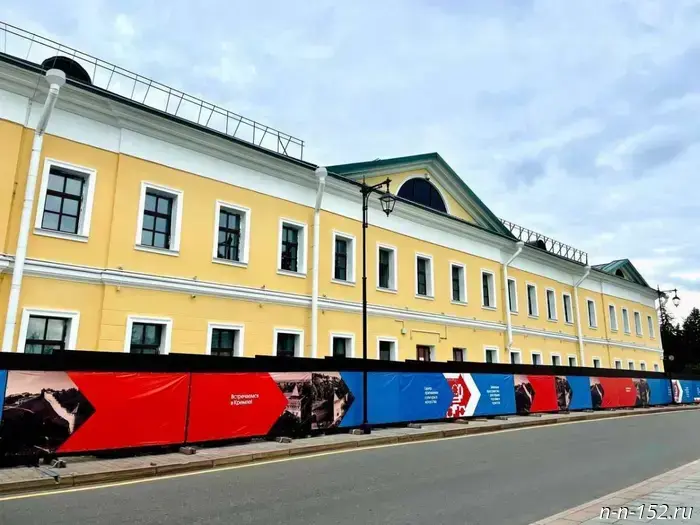
Contemporary theatre: how performances are changing and which trends are shaping stage art
erid: 2SDnjepKiLP
Contemporary theater is undergoing a period of rapid change. New technologies, innovative production approaches and the adaptation of old traditions are affecting the format of performances as well as audience perception. In recent years, one of the most important trends has become the broadcasting of performances, allowing viewers around the world to enjoy theatrical art without needing to visit theater stages.
Technologies in theater: a new generation of spectators
In an effort to remain relevant, theaters are increasingly using new digital technologies. One of the most significant directions is the use of online platforms to broadcast performances. This opens new horizons for theaters, allowing them to attract viewers not only from neighboring cities but also from other countries. Broadcasting performances makes art accessible to everyone, regardless of their geographic location. Through streaming services, one can see productions from the world’s major theaters, which significantly expands the circle of theater art enthusiasts.
For the modern viewer raised in the age of the internet and technology, such solutions become a familiar way of engaging with culture. Online broadcasts allow watching performances at any convenient time from home, which undoubtedly changes the way theater is perceived.
Changes in classical theater
Nevertheless, classical theater is not disappearing; on the contrary, it is undergoing changes. Contemporary directors strive to preserve the core principles of theatrical art while adapting them to the new era. Such productions may include elements of multimedia, light and sound, which help to more deeply reveal the atmosphere of the staging. One vivid example of such changes is the classical opera, where traditional forms meet new technologies. Audiences can see how familiar arias and stage solutions are enriched with special effects, and opera becomes more dynamic and interactive.
In addition, contemporary opera and theatrical productions often address current social and political issues. This makes art more meaningful and allows engaging audiences in discussions of important societal questions. Classical opera, in turn, becomes more accessible and understandable to a wide audience thanks to these transformations.
Online formats and new art forms
With the development of digital technologies, online ballet is also coming to theater. Today viewers can enjoy ballet performances without leaving their homes. Many theaters have already begun to provide recordings of their best productions online, as well as hold live broadcasts, giving viewers the opportunity to be part of the spectacle in real time. This contributes to the popularization of ballet among a younger audience who might not otherwise have the opportunity to attend live ballet performances.
Online ballet also provides access to unique productions that may be difficult to see in a particular country or region. Contemporary ballet productions often combine traditional dance with new genres and styles, attracting viewers’ attention and bringing new life to a traditional art form.
The influence of social media on theater
An important factor in the changing theatrical industry has been the active use of social media. Nowadays, theaters actively develop their presence on platforms such as Instagram, Facebook and TikTok to share with audiences not only announcements of upcoming performances but also behind-the-scenes moments, interviews with actors and directors. This creates a closer connection between the theater and its audiences, as well as attracts new fans of theatrical art.
Modern theater seeks not only to preserve traditions but also to involve audiences in the creative process. On social media one can not only learn about new productions but also follow rehearsals, ask questions to actors, and share impressions of performances. This helps create a community of theater fans and forms a new experience for audiences.
Conclusion
Contemporary theater continues to change, adapting to the demands of the times and modern technologies. Broadcasting performances, online ballet and the adaptation of classical works — all of this opens new horizons for theaters and their audiences. However, it is important to remember that behind all technological innovations there is art, which remains alive and important. Technology helps theater become accessible, but its spirit and power remain unshakable.
Advertisement. OOOG "Russian Cultural Fund". TIN 7704412980 leoclassics.tv
NIA "Nizhny Novgorod" has a Telegram channel. Subscribe to stay informed about major events, exclusive materials and timely updates. Copyright © 1999—2025 NIA "Nizhny Novgorod". When republishing, a hyperlink to NIA "Nizhny Novgorod" is required. This resource may contain 18+ materials.
Другие Новости Нижнего (Н-Н-152)
 The bankruptcy of "Nizhavtodorstroy" led to an inspection by Rostrud.
Nizhny Novgorod News
The bankruptcy of "Nizhavtodorstroy" led to an inspection by Rostrud.
Nizhny Novgorod News
 90 kg of suspicious bread were seized in the Nizhny Novgorod region.
Nizhny Novgorod News
90 kg of suspicious bread were seized in the Nizhny Novgorod region.
Nizhny Novgorod News
 Bastrykin has taken an interest in the case of violations of the rights of a disabled child in Dzerzhinsk.
Nizhny Novgorod News
A man's body was recovered from the Oka River in Nizhny Novgorod.
The identity of the deceased and the circumstances of the tragedy are being established by transport police officers
The body of a man was recovered from the Oka River in Nizhny Novgorod. 22.10.2025. Komsomolskaya Pravda. Nizhny Novgorod Oblast. Nizhny Novgorod.
Olga Akimova was unanimously elected director of the Chamber of Commerce and Industry of the Nizhny Novgorod Region.
Olga Akimova was unanimously elected director of the Chamber of Commerce and Industry of the Nizhny Novgorod Region.
According to a correspondent of the NTA-Privolzhye news agency who attended the extraordinary conference of the Chamber of Commerce and Industry (CCI) of the Nizhny Novgorod Region on October 23, 2025. NTA-Privolzhye. Nizhny Novgorod Region. Nizhny Novgorod.
Bastrykin has taken an interest in the case of violations of the rights of a disabled child in Dzerzhinsk.
Nizhny Novgorod News
A man's body was recovered from the Oka River in Nizhny Novgorod.
The identity of the deceased and the circumstances of the tragedy are being established by transport police officers
The body of a man was recovered from the Oka River in Nizhny Novgorod. 22.10.2025. Komsomolskaya Pravda. Nizhny Novgorod Oblast. Nizhny Novgorod.
Olga Akimova was unanimously elected director of the Chamber of Commerce and Industry of the Nizhny Novgorod Region.
Olga Akimova was unanimously elected director of the Chamber of Commerce and Industry of the Nizhny Novgorod Region.
According to a correspondent of the NTA-Privolzhye news agency who attended the extraordinary conference of the Chamber of Commerce and Industry (CCI) of the Nizhny Novgorod Region on October 23, 2025. NTA-Privolzhye. Nizhny Novgorod Region. Nizhny Novgorod.
 The opening of a branch of the Russian Museum in the Nizhny Novgorod Kremlin is being postponed.
Nizhny Novgorod News
The opening of a branch of the Russian Museum in the Nizhny Novgorod Kremlin is being postponed.
Nizhny Novgorod News
Contemporary theatre: how performances are changing and which trends are shaping stage art
Nizhny Novgorod News
